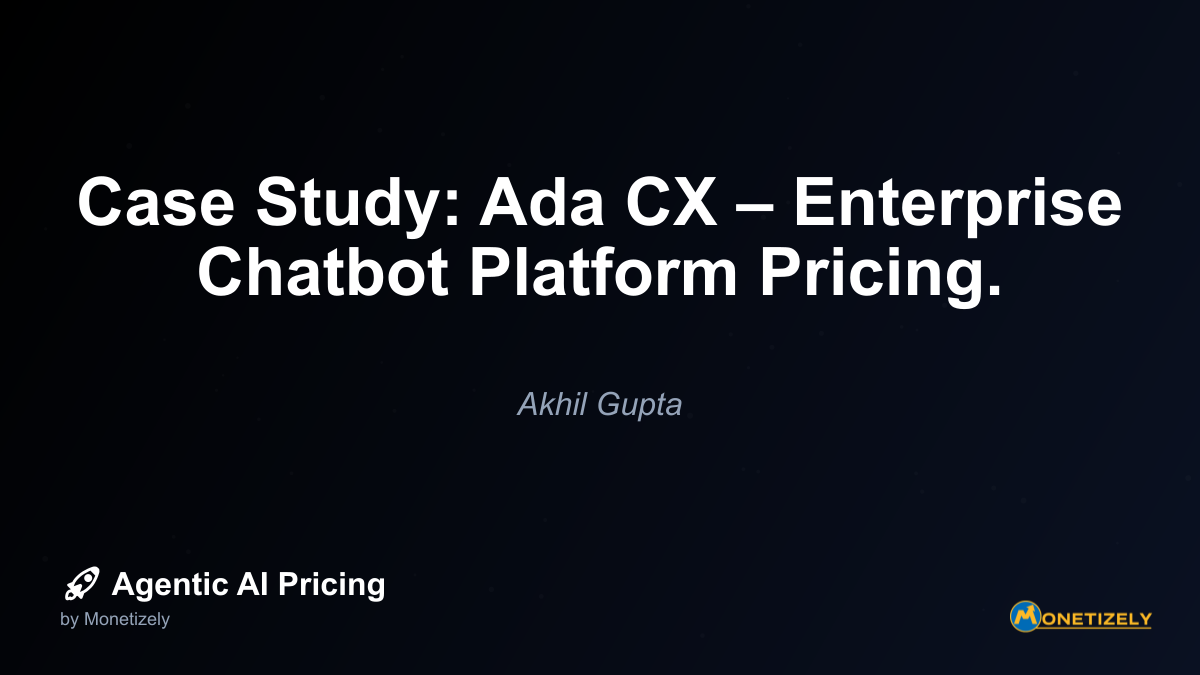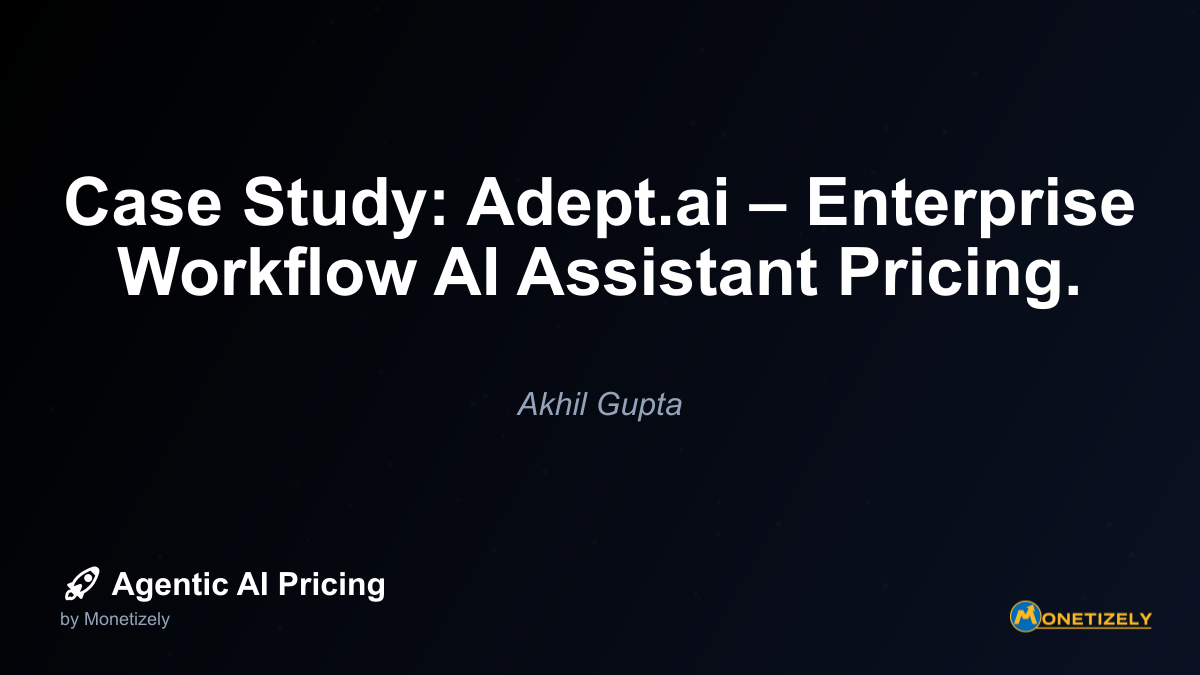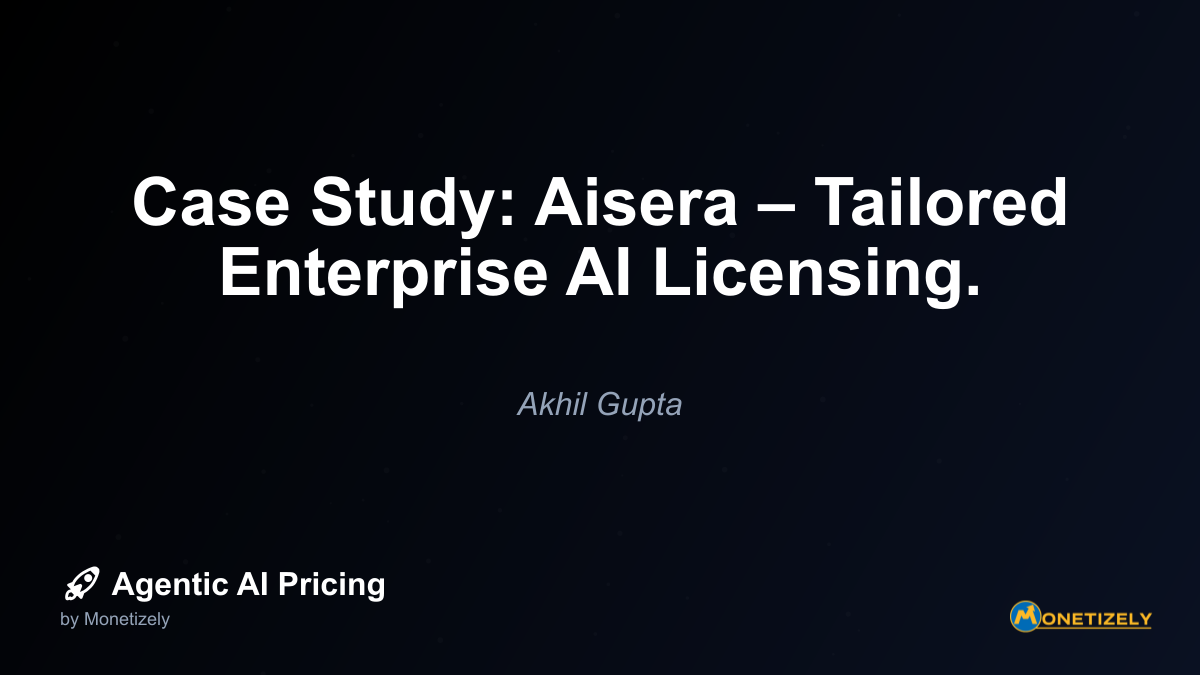· Ajit Ghuman · Case Studies · 6 min read
Case Study: Beam AI – Custom Enterprise Automation Agreements.
AI and SaaS Pricing Masterclass
Learn the art of strategic pricing directly from industry experts. Our comprehensive course provides frameworks and methodologies for optimizing your pricing strategy in the evolving AI landscape. Earn a professional certification that can be imported directly to your LinkedIn profile.

3. Professional Services as Strategic Revenue Component
For complex agentic AI platforms, professional services represent not just implementation support but a critical revenue and value delivery component. Beam’s approach demonstrates:
- Services-to-License Ratio – Professional services often represent 40-60% of total contract value in initial years
- Transition to Recurring Revenue – Services typically decrease as a percentage of revenue over time as implementation matures
- Value-Add vs. Cost Center – Positioning services as strategic enablers rather than necessary evils
- Expertise Monetization – Capturing value from specialized knowledge in process optimization and agent development
For vendors in the agentic AI space, professional services represent a critical component of enterprise AI pricing models, not merely an implementation necessity but a strategic value driver that warrants its own pricing structure.
4. Multi-Year Commitments Drive Predictability
Beam typically structures agreements as three-year commitments with annual payments. This approach:
- Provides revenue predictability for Beam
- Aligns with enterprise budget cycles
- Allows for value measurement across multiple fiscal periods
- Creates incentives for deeper integration and expansion
- Establishes a partnership mentality versus transactional relationship
The multi-year structure also enables more sophisticated pricing mechanisms that account for increasing value over time as the platform becomes more deeply embedded in enterprise processes.
Implementation Case: Global Financial Services Firm
To illustrate Beam’s enterprise agreement approach in practice, consider this anonymized implementation at a global financial services organization (referred to as “FinCorp”).
Initial Engagement and Discovery
FinCorp’s journey with Beam began with a comprehensive process discovery and value assessment engagement. This $250,000 initial project spanned 12 weeks and:
- Mapped 37 key operational processes across wealth management, lending, and compliance
- Identified 14 high-priority processes for automation
- Quantified potential value creation of $42 million annually
- Developed an implementation roadmap and business case
This initial engagement served both as a revenue opportunity for Beam and as the foundation for the subsequent enterprise agreement.
Enterprise Agreement Structure
Based on the discovery findings, FinCorp and Beam entered into a three-year enterprise agreement with the following components:
Base Platform License
- $1.2 million annual platform license
- Enterprise-wide deployment rights
- Core platform capabilities and integrations
- 24/7 premium support and quarterly health checks
Process-Based Components
- Tier 1 (Basic) Processes: $50,000 per process annually
- Tier 2 (Intermediate) Processes: $125,000 per process annually
- Tier 3 (Complex) Processes: $250,000 per process annually
- Initial implementation covered 8 processes (2 Tier 1, 4 Tier 2, 2 Tier 3)
- Annual process bundle: $1.15 million
Professional Services
- Initial implementation: $2.8 million (year one)
- Ongoing optimization: $1.2 million annually (years two and three)
- Training and enablement: $400,000 (year one), $200,000 annually thereafter
Value-Based Components
- Base fees represent approximately 80% of total contract value
- Performance bonus pool of 20% tied to specific KPIs:
- Processing time reduction
- Error rate improvement
- Cost savings realization
- Customer satisfaction impact
Total Contract Value
- Year One: $5.55 million ($1.2M platform + $1.15M processes + $3.2M services)
- Year Two: $3.75 million ($1.2M platform + $1.15M processes + $1.4M services)
- Year Three: $3.75 million ($1.2M platform + $1.15M processes + $1.4M services)
- Total three-year agreement: $13.05 million plus performance bonuses
Implementation Outcomes
Over the initial 18 months of the agreement, FinCorp realized significant benefits:
- 73% reduction in processing time for loan applications
- 82% decrease in compliance-related errors
- $18.4 million in documented cost savings
- Redeployment of 127 FTEs to higher-value activities
- Customer satisfaction improvements of 32 points (NPS)
These outcomes triggered performance bonuses totaling $1.2 million in the first 18 months, bringing the effective contract value even higher while maintaining strong ROI for FinCorp.
Key Takeaways for Agentic AI Pricing
Beam AI’s approach to enterprise automation agreements offers valuable insights for vendors developing pricing strategies in the agentic AI space:
1. Value Metrics Drive Premium Pricing
Successful enterprise AI vendors tie pricing directly to measurable business outcomes rather than technical metrics. Value-based pricing models for agentic AI focus on the transformative impact these systems deliver, not just the technology itself. This requires:
- Developing robust value assessment methodologies
- Creating clear ROI models specific to each use case
- Implementing measurement frameworks for ongoing value tracking
- Training sales teams to sell on value rather than features
2. Customization Creates Competitive Moats
By rejecting standardized pricing in favor of customized enterprise agreements, Beam creates significant competitive advantages:
- Reduced price comparison shopping
- Higher switching costs once implemented
- Deeper alignment with client business objectives
- Opportunities to capture more value from high-ROI implementations
While custom pricing increases sales complexity, it ultimately enables premium positioning and higher customer lifetime value for sophisticated AI platforms.
3. Professional Services Enhance Platform Value
For complex agentic AI implementations, professional services are not merely an implementation necessity but a strategic value driver. Successful vendors like Beam:
- Package services as strategic enablers rather than cost centers
- Develop specialized service offerings aligned with platform capabilities
- Create clear methodologies that differentiate service delivery
- Build services teams with domain expertise, not just technical skills
4. Expansion Strategies Drive Growth
Beam’s enterprise agreements include clear pathways for expansion through:
- Tiered process pricing that encourages additional automation
- Professional services packages for new use cases
- Value-based incentives that reward broader implementation
- Knowledge transfer that enables internal champions
This “land and expand” approach allows initial deals to grow significantly over time, increasing customer lifetime value while delivering proportional benefits to clients.
The Future of Enterprise Agentic AI Pricing
As the agentic AI market continues to mature, we can expect several evolutions in enterprise pricing approaches:
Industry-Specific Benchmarking
Vendors like Beam are beginning to develop industry-specific value benchmarks that enable more precise ROI projections and value-based pricing. These benchmarks provide:
- Typical process improvement metrics by industry
- Expected cost savings ranges for specific use cases
- Implementation timelines and resource requirements
- Common challenges and mitigation strategies
Ecosystem Value Capture
As agentic platforms become central to enterprise operations, pricing models will evolve to capture value from ecosystem expansion:
- Developer marketplaces for specialized agents
- Integration pricing for third-party systems
- Data enrichment services and premium capabilities
- Industry-specific solution packages
Outcome-Based Pricing Acceleration
While already present in some agreements, outcome-based pricing components will likely become more sophisticated and prevalent:
- More precise measurement methodologies
- Greater portions of contracts tied to outcomes
- More complex gain-sharing arrangements
- Industry-specific performance metrics
Consumption-Based Hybrid Models
Some enterprises are beginning to request hybrid models that combine fixed platform fees with consumption-based components:
- Base platform fee plus usage-based components
- Volume tiers with predictable ceiling prices
- Minimum commitments with flexible consumption above thresholds
- Reserved capacity models similar to cloud infrastructure
Conclusion
Beam AI’s approach to enterprise automation agreements demonstrates the sophisticated pricing strategies required for high-value agentic AI platforms. By implementing custom agreements that align with enterprise value creation, incorporating professional services as strategic components, and building in value-based incentives, Beam has established itself as a premium provider commanding substantial fees while delivering measurable ROI.
For other vendors in the agentic AI space, Beam’s model offers valuable lessons in moving beyond commodity pricing to value-based approaches that reflect the transformative potential of these technologies. As enterprises increasingly recognize the strategic importance of agentic automation, the willingness to invest in premium solutions with demonstrable ROI will continue to grow, creating opportunities for vendors who can effectively communicate and deliver on their value proposition.
The future of enterprise agentic AI pricing will likely see even more sophisticated approaches that balance predictability for vendors with flexibility for customers while maintaining a clear focus on business outcomes and value creation. Successful vendors will be those who can navigate this complexity while clearly articulating how their platforms transform enterprise operations and deliver sustained competitive advantage.
Co-Founder & CEO
Ajit is the author of Price To Scale, a top book on SaaS Pricing and is the Founder of Monetizely. Ajit has led and worked in pricing and product marketing at firms like Twilio, Narvar and Medallia. His work has been featured in Forbes and VentureBeat. Ajit regularly consults with software companies from Seed stage to post-IPO on pricing strategy. Ajit is also a highly-rated co-instructor for 'The Art of SaaS Pricing and Monetization' on Maven.
Pricing Strategy Audit
Let our experts analyze your current pricing strategy and identify opportunities for improvement. Our data-driven assessment will help you unlock untapped revenue potential and optimize your AI pricing approach.




